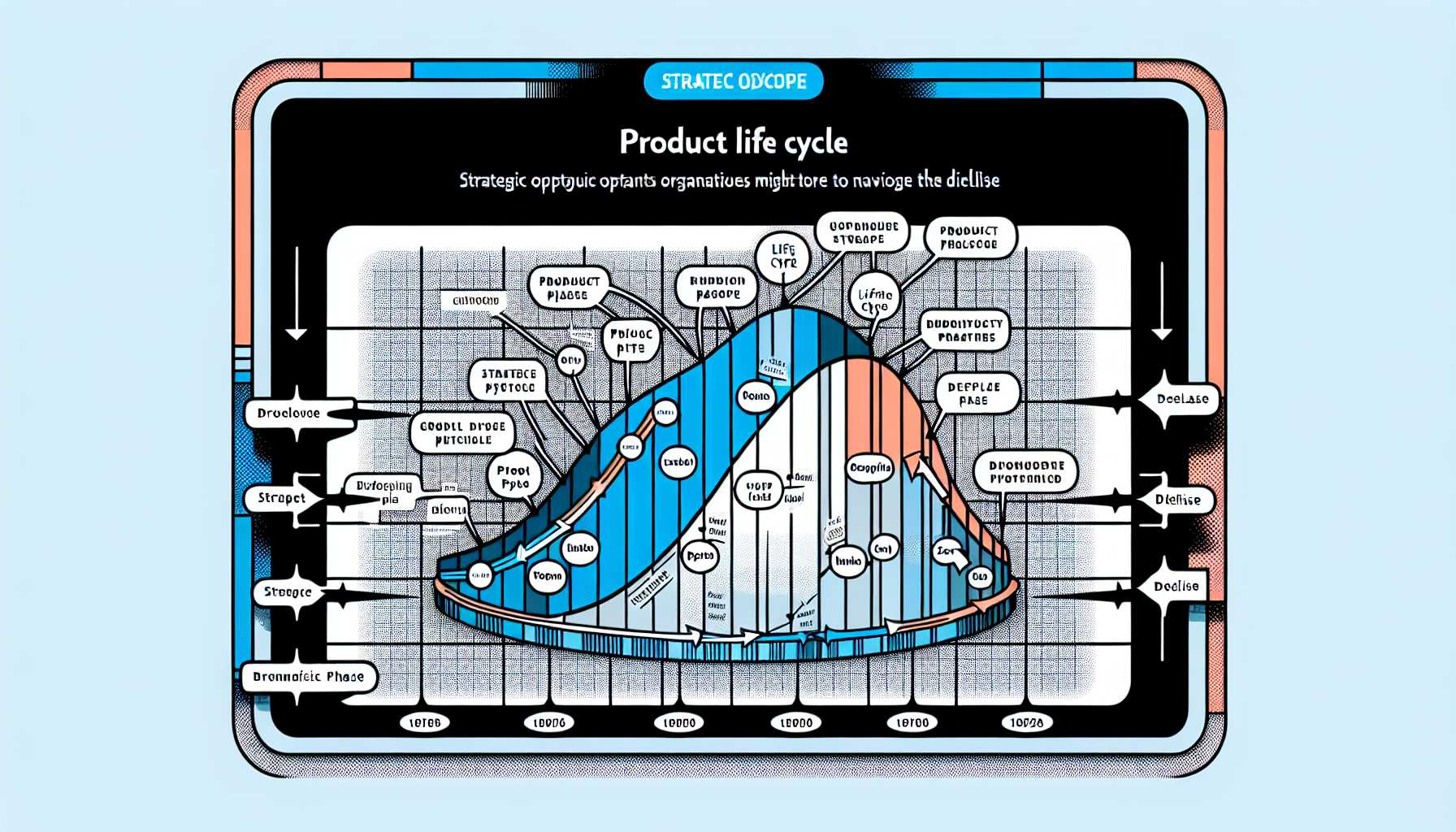Hello again, fellow product champions. It’s no secret that every market faces cyclical trends, and there comes a point when a product might enter a phase of decline. This phase poses its unique set of challenges and requires a distinct strategic approach for a product to remain competitive and profitable. Drawing upon my experience managing products in declining markets, I will share insights into the challenges we face, the opportunities that still shine through, and how to navigate these turbulent waters.
Understanding the Decline
Entering a declining market phase often sets off alarms—and for good reason. Sales are dropping, new customer acquisition becomes challenging, and the competitive landscape intensifies as businesses scramble for a smaller pie. An initial step in this situation is a deep-dive analysis to understand the reasons behind the decline. Are there shifts in consumer behavior, new regulations, or disruptive technologies that have changed the game?
One of my most illuminating experiences was with a legacy software product that was declining due to the emergence of cloud-based solutions. By recognizing this trend early, we were able to pivot our strategy from fighting the decline to using it as an opportunity to innovate.
Streamlining and Optimizing
In a declining market, efficiency becomes paramount. This is the time to strip down to the essentials and focus on core strengths. Streamlining operations, optimizing the cost structure, and maximizing the value of existing customer relationships is key. A practical measure I’ve implemented is applying the Pareto principle (80/20 rule) to identify features or services that generate the majority of value and doubling down on those.
Strategies for Competitiveness
Product differentiation becomes crucial when the market contracts. To ensure competitiveness:
- Enhance the Core: Focus on refining the core features that serve your customers’ primary needs and ensure they are best-in-class.
- Customer Retention: Double the efforts on customer service and retention programs. Loyal customers are a treasure trove in declining markets.
- Look for Adjacencies: Explore adjacent markets or complementary products where your current offerings could be relevant.
- New Business Models: Sometimes, the product isn’t the issue; the business model is. Could a subscription model or a freemium approach open up new revenue streams?
I’ll never forget when we shifted our business model from a perpetual license to a subscription model for a declining desktop application. This not only stabilized our revenue but also revitalized the product’s development cycle.
Investing in Innovation
A declining market is no excuse to cut back on innovation. Sometimes, the most groundbreaking disruptions come from constraints. Investing in R&D, exploring technology partnerships, and experimenting with new ideas can be the springboard for the next growth curve. In one particular instance, my team harnessed the capabilities of AI to revitalize an aging analytics platform. This investment paid off not just financially, but also in reinvigorating the brand.
Leveraging Data
Data is your compass in a declining market. Deep analytics can help you understand customer behavior patterns, pinpoint areas for cost reduction, and uncover hidden opportunities for growth. In my experience, this meant delving into customer usage data to discover unmet needs and align our product evolution accordingly.
Exit Strategies
While all our efforts may be towards turning the tide, sometimes the most strategic move is to recognize when it’s time to sunset a product. Having a graceful and well-managed exit strategy can conserve resources for more profitable ventures and protect your brand’s reputation.
I recall with fondness (and a touch of sorrow) when we decided to sunset an older product line. By transitioning customers to a more modern platform, we were able to retain their business and safeguard future revenue streams.
The Silver Lining
It’s important to keep morale high and look for the silver lining even when managing a product in a declining market. There is always room for growth, innovation, and strategy realignment to create a new future for your product. Sometimes, thriving in adversity can lead to the most rewarding success stories.
Managing a declining product is no easy feat, but it’s a challenge that can highlight a product manager’s strategic and innovative strength. The opportunities for learning and development in these moments are vast, and often, they pave the way for unexpected triumphs. Let’s embrace the decline phase as just another chapter in the rich story of our products.

